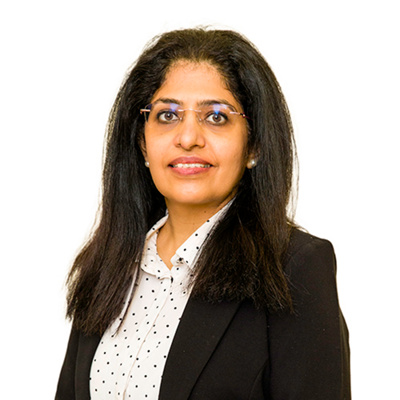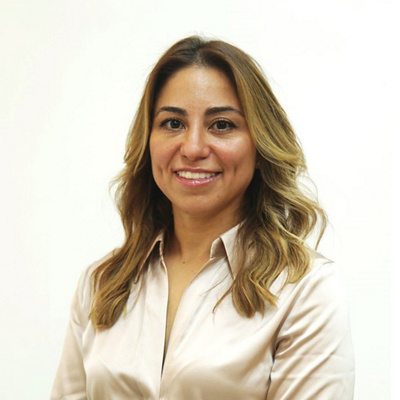Breast surgery is a procedure that requires modification to a woman or man’s breasts. Such surgeries are done for a variety of reasons. Some are done for cosmetic reasons, while others are medically necessary such as for breast cancer, non-cancerous breast lumps and breast reduction surgery to help get rid of back pain.
The Breast Surgery Unit at Mediclinic Parkview Hospital offers a wide range of services by a very experienced and quality driven multidisciplinary team to insnure best results and surgical outcomes of the our patients
Breast Cancer Surgery
Breast cancer is malignant changes that occur in the breast tissue and is the most common form of cancer in women. The treatment is dependent on the type of the cancer and is usually a combination of surgery, chemotherapy, hormonal therapy, biological therapy and radiotherapy. In most cases, surgery is the primary treatment method but often the treatment will be a combination of the above mentioned options.
The surgical removal of a tumor from the breast is a fundamental part of breast cancer treatment. Where possible, the surgeon focuses on preserving breast tissue. If breast removal is necessary, it can be reconstructed with plastic surgery after this surgery.
Breast cancer surgeries done at Mediclinic Parkview Hospital
- Oncoplastic breast surgery
- Mastectomy
- Skin sparing or nipple sparing mastectomy
- Immediate breast reconstruction following mastectomy
- Magseed / Saviscout localised breast surgery
- Sentinel node biopsy
- Axillary clearance
- Male breast cancer surgery
I am diagnosed with breast cancer. What now?
If you have been diagnosed with breast cancer, we will plan the best treatment for you. All our cases are discussed within a multidisciplinary team meeting, following international guidelines before we agree on a treatment plan.
The treatment plan will be decided together with you after you have been informed about all your options. This is called shared decision making.
Surgical treatment
Mastectomy
In some cases, if breast conservation surgery is not possible, a mastectomy has to be performed to remove the cancer.
A simple mastectomy is removal of as much breast tissue as possible including the skin and the nipple. In most cases there is a possibility for immediate or delayed reconstruction.
At Mediclinic Parkview Hospital, we perform skin and nipple sparing mastectomy, where we can preserve the original breast skin and remove the breast tissue underneath.
Wide local excision
The operation to remove cancer-affected tissue without removing the entire breast is known as a wide local excision. A small amount of surrounding tissue will be removed together with the cancer, in order to be sure that no cancer has been left behind. The amount of tissue removed depends on the size of the tumour.
If the cancer affected tissue is large in relation to your breast size, your breast might be a different size or shape following the surgery. This may result in a bad cosmetic result. In order to avoid this, oncoplastic techniques can be used. The type of technique is dependent on various factors, such as the size of your breast, the presence of drooping of the breast and the location of the cancer within the breast.
Image guided
At Mediclinic Parkview we have the latest technology to help us with removal of the tumour. Sometimes, when the cancer is picked up at an early stage or if the cancer cannot be felt, image guidance is necessary to identify the correct area to be removed during surgery.
The breast radiologist will then place a magseed or a saviscout marker before surgery.
Sentinel lymph node biopsy
Sometimes breast cancer can spread to the nearby lymph nodes under the arm. In order to assess the lymph nodes for spread, a method called sentinel lymph node biopsy will be performed at the same time of your breast surgery.
The sentinel lymph node is the first node where the cancer cells from the breast could spread. If the sentinel lymph node does not contain breast cancer, it will not be necessary to remove the other lymph nodes under the arm. In order to detect the sentinel lymph node during surgery, a marker is injected in the breast while you are under general anaesthesia. This marker is called Magtrace.
Axillary clearance
In case the sentinel lymph node contains breast cancer cells, you might need to remove the other lymph nodes under the arm. This is called axillary lymph node clearance or dissection.
In most cases a drain (plastic tube) is left behind for a couple of days to drain excess wound fluid.
Oncoplastic breast surgery
Our Oncoplastic breast surgeons provide a broad range of breast surgeries including benign breast surgery, breast cancer surgery, preventative surgery and reconstructive surgery for patients. Our multidisciplinary team is dedicated to improving your breast health and providing compassionate care.
What are the benefits of oncoplastic breast surgery?
Surgery is one of the main treatment options for breast cancer. In most cases, only the area affected by the cancer will be removed. This is called breast-conserving surgery.
Oncoplastic surgery is breast surgery that combines cancer surgery with reconstruction techniques in order to achieve better cosmetic results.
Sometimes this involves surgery on both breasts to make them look as similar as possible.
The benefits of oncoplastic breast surgery are that you can combine treatment and reconstruction in one surgery. Furthermore, women who have undergone oncoplastic breast surgery tend to be more satisfied with their appearances after surgery.
Therapeutic mammoplasty techniques.
A therapeutic mammoplasty is a technique to remove cancer and at the same time to reshape the breast by removing skin and breast tissue. Your breast will be smaller and more uplifted. The same procedure can be performed on the other breast to have better matching breasts.
Therapeutic mammoplasty is a good option when it is anticipated that removal of the cancer will leave a big defect or when the breasts are very large and droopy.
The most common techniques are the anchor shaped scar (wise pattern) and the lollypop scar (vertical scar).

Other techniques
- Lateral mammoplasty or racket handle technique
- Roundblock
- Batwing/ Hemibatwing
- Grisotti/ B flap
- Donut mastopexy
What are the benefits of therapeutic mammoplasty?
There are several benefits of having a therapeutic mammoplasty:
- You would not need to remove the whole breast to remove the cancer affected area (unlike a mastectomy)
- The breast will be reshaped with the goal to have an as normal looking breast as possible. Therefore it is less likely to have a deformity of the breast
- If you have very large breasts, a reduction in size can be an extra benefit
- Reducing the size of your breast can make radiotherapy treatment easier and more effective
Lateral chest wall perforator flap (LiCAP flap)
Some patients who have small breasts can be offered a procedure to replace the defect caused by the resection of the cancer- affected area with tissue from the side. This is called a lateral chest wall perforator flap (LICAP flap).
This is a newer technique that allows women to have breast conservation surgery who otherwise would have had a mastectomy.
The LICAP flap is most suitable for cancers in the outer side of the breast. The flap is composed out of fat and skin tissue only and the muscle is spared. The advantage of this procedure is that the shape and size of the breast is preserved and no or minimal asymmetry is expected, which makes surgery to the other breast unnecessary.
Breast reconstruction
In most cases, immediate breast reconstruction (IBR) can be performed following mastectomy for breast cancer.
When immediate reconstruction is planned, a skin sparing mastectomy or nipple sparing mastectomy is performed in which only the breast tissue is removed. The cavity that is left will then be replaced by an implant or your own body tissue.
In certain cases, for example when radiotherapy is needed after surgery, a temporary implant is placed (a tissue expander). After completion of the treatment, the expander will be replaced by a fixed implant or in some cases your own body tissue.
Implant based direct reconstruction (IBR)
This is a procedure in which a breast implant is placed at the time of a mastectomy in a single stage. The implant is placed beneath or above the muscle and covered by material known as acellular dermal matrix. Sometimes, the other breast needs to be operated on to achieve symmetry.
Subpectoral IBR
This operation is usually performed in two stages. In the first operation a tissue expander is placed under the muscle, which then be slowly filled with saline every other week until the desired volume is reached. During the second operation the expander will be exchanged for a permanent implant.
Disadvantages of this procedure are postoperative pain to the stretching of the muscle and upwards moving of the implant when the chest muscle is contracted (animation).
Prepectoral IBR
In this operation the implant is placed on top of the muscle and is usually done in a single operation. There is no risk of animation.
If you have thin skin, the implant may be ‘visible’ and look rippled. This can to some degree be corrected with lipomodelling (fat grafting) in a second surgery.
Benign Surgery
- Diagnostic excision
- Breast abscess surgery
- Nipple duct excision
- Breast reduction surgery
- Gynaecomastia
Most of the patients who are seen in a breast clinic do not have cancer. However, if you feel a lump or change in the breast, you need to be checked out.
Some benign breast changes or lumps which are not cancer can increase your risk of developing breast cancer. In these instances you might need a follow-up plan and/or surgical removal (diagnostic excision) of the lump.
The most common benign breast changes are caused by fibrocystic changes, fibro adenoma, breast cysts, benign calcifications and intraductal papilloma.
Gynecomastia
Gynaecomastia is development of breast tissue in men, caused by hormone imbalance. Gynaecomastia is a benign condition, but it can cause discomfort and it might not be aesthetically pleasing. Depending on the cause, gynaecomastia can go away on its own, but sometimes can be treated with medication or surgery.
Second Opinion
Services covered:
- Reassessment of previous diagnostics
- Assessment for breast conservation
- Revisional surgery
You can get a second opinion on your treatment options. We would need to review your medical reports, slides and CDs with your previous imaging to re-evaluate the results. A second opinion might confirm your original doctor’s diagnosis and plan, or it could give you other or additional treatment options that were not considered before.
If you are not satisfied by the appearance of your breast after cancer surgery, you may be a candidate for Revisional surgery.
- Reassessment of previous diagnostics
- Assessment for breast conservation
- Revisional surgery
Familial Breast cancer
Services covered:
- Genetic consultation
- Risk assessment
- Risk reducing mastectomy and reconstruction
Most breast cancers are not hereditary and only a small number of people have an increased risk for developing breast cancer because of their family history.
However, if you have a close relative (your mother, sister, daughter or father) who was diagnosed with breast cancer, you might want to know if you are at increased risk.
Genetic testing is offered to people who are at increased risk of developing breast cancer based on their personal or family history.
If genetic testing is positive, monitoring with a more intensive screening plan would be necessary and discussion about risk reducing surgery could be offered.
At Mediclinic Parkview Hospital, we perform risk reducing skin and nipple sparing mastectomy, wherein we can preserve the original breast skin and remove the breast tissue underneath combined with immediate reconstruction.
Breast Reconstruction
Breast reconstruction is a surgical procedure that restores shape and volume to your breast after mastectomy.
There are different types of breast reconstruction and these options should be discussed with your surgeon.
Regardless of whether you have immediate or delayed reconstruction surgery, the breast reconstruction process usually requires two or more operations.
Breast reconstruction methods include:
Implant reconstruction: A breast implant replaces the tissue that was removed from your breast to restore its shape and volume. The implant is a silicone shell that’s filled with either saline or silicone gel. The surgeon places it over or under your muscle and covers it with your skin — either your original breast skin or a local pedicled skin flap from a contiguous area.
Autologous or “flap” reconstruction: This method takes tissue from another part of your body to reconstruct your breast. Skin, fat and sometimes muscle from areas such as your belly, back or buttocks tend to better resemble breast tissue in look and feel. Sometimes surgeons use a combination of flap and implant reconstruction for more realistic results.
Nipple reconstruction: Breast reconstruction may also include reconstruction of your nipple if this is sacrificed for an oncological reason, if you choose so.
3D nipple tattooing, to define the darker area of skin surrounding your nipple is also available if you don’t want to undergo another surgery.





